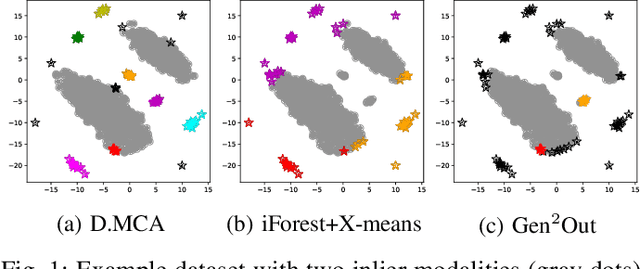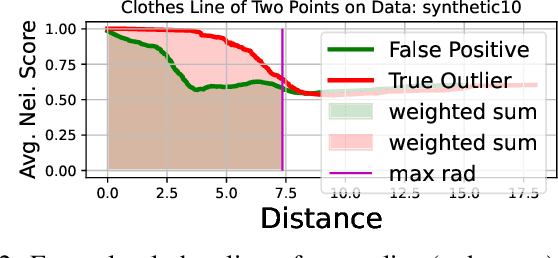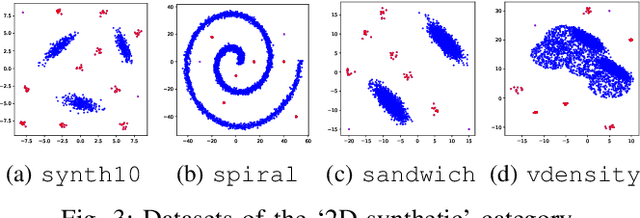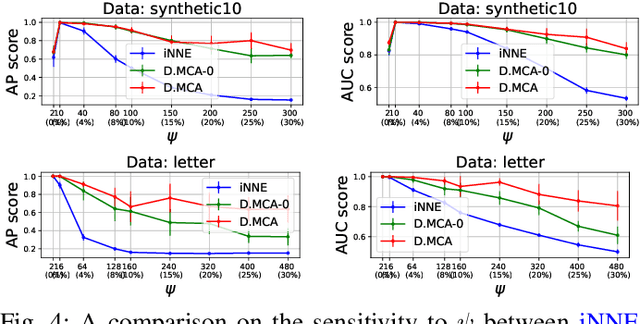D.MCA: Outlier Detection with Explicit Micro-Cluster Assignments
Paper and Code
Oct 15, 2022



How can we detect outliers, both scattered and clustered, and also explicitly assign them to respective micro-clusters, without knowing apriori how many micro-clusters exist? How can we perform both tasks in-house, i.e., without any post-hoc processing, so that both detection and assignment can benefit simultaneously from each other? Presenting outliers in separate micro-clusters is informative to analysts in many real-world applications. However, a na\"ive solution based on post-hoc clustering of the outliers detected by any existing method suffers from two main drawbacks: (a) appropriate hyperparameter values are commonly unknown for clustering, and most algorithms struggle with clusters of varying shapes and densities; (b) detection and assignment cannot benefit from one another. In this paper, we propose D.MCA to $\underline{D}$etect outliers with explicit $\underline{M}$icro-$\underline{C}$luster $\underline{A}$ssignment. Our method performs both detection and assignment iteratively, and in-house, by using a novel strategy that prunes entire micro-clusters out of the training set to improve the performance of the detection. It also benefits from a novel strategy that avoids clustered outliers to mask each other, which is a well-known problem in the literature. Also, D.MCA is designed to be robust to a critical hyperparameter by employing a hyperensemble "warm up" phase. Experiments performed on 16 real-world and synthetic datasets demonstrate that D.MCA outperforms 8 state-of-the-art competitors, especially on the explicit outlier micro-cluster assignment task.
 Add to Chrome
Add to Chrome Add to Firefox
Add to Firefox Add to Edge
Add to Edge